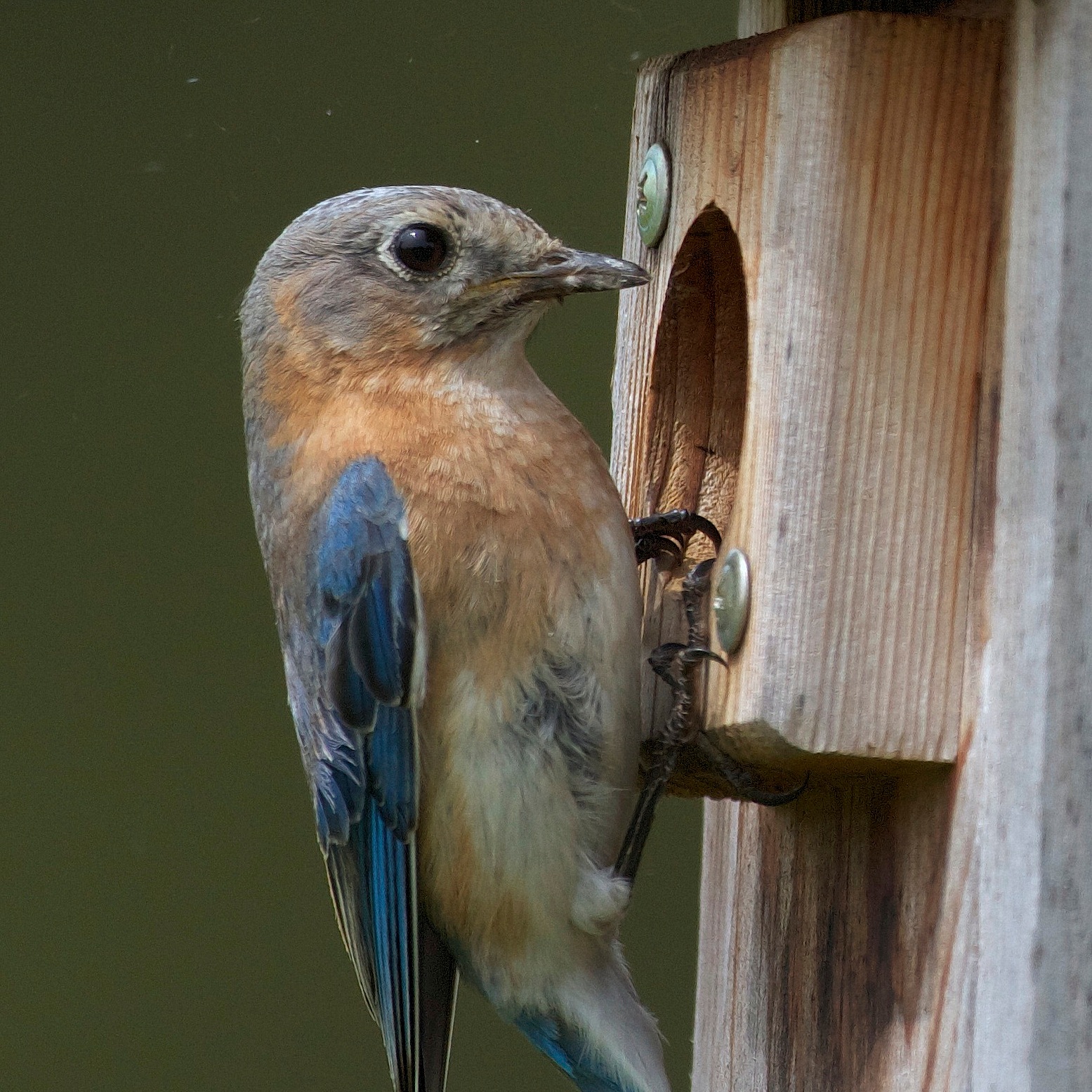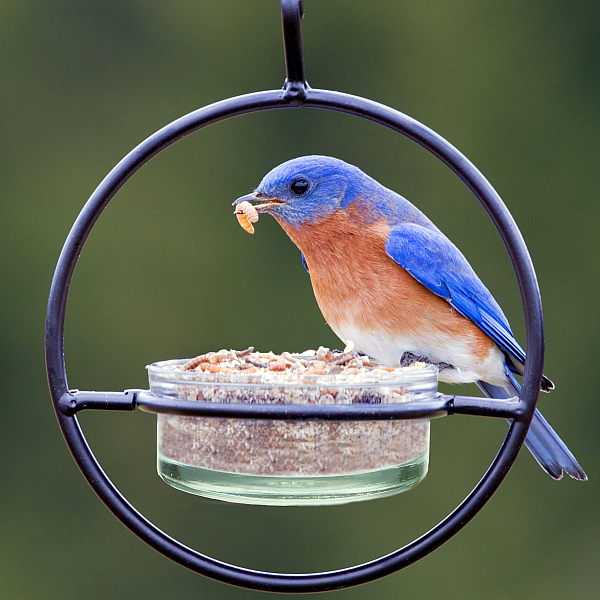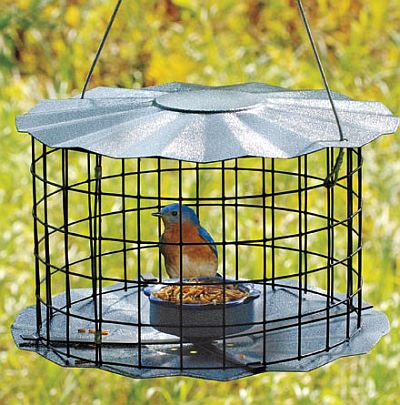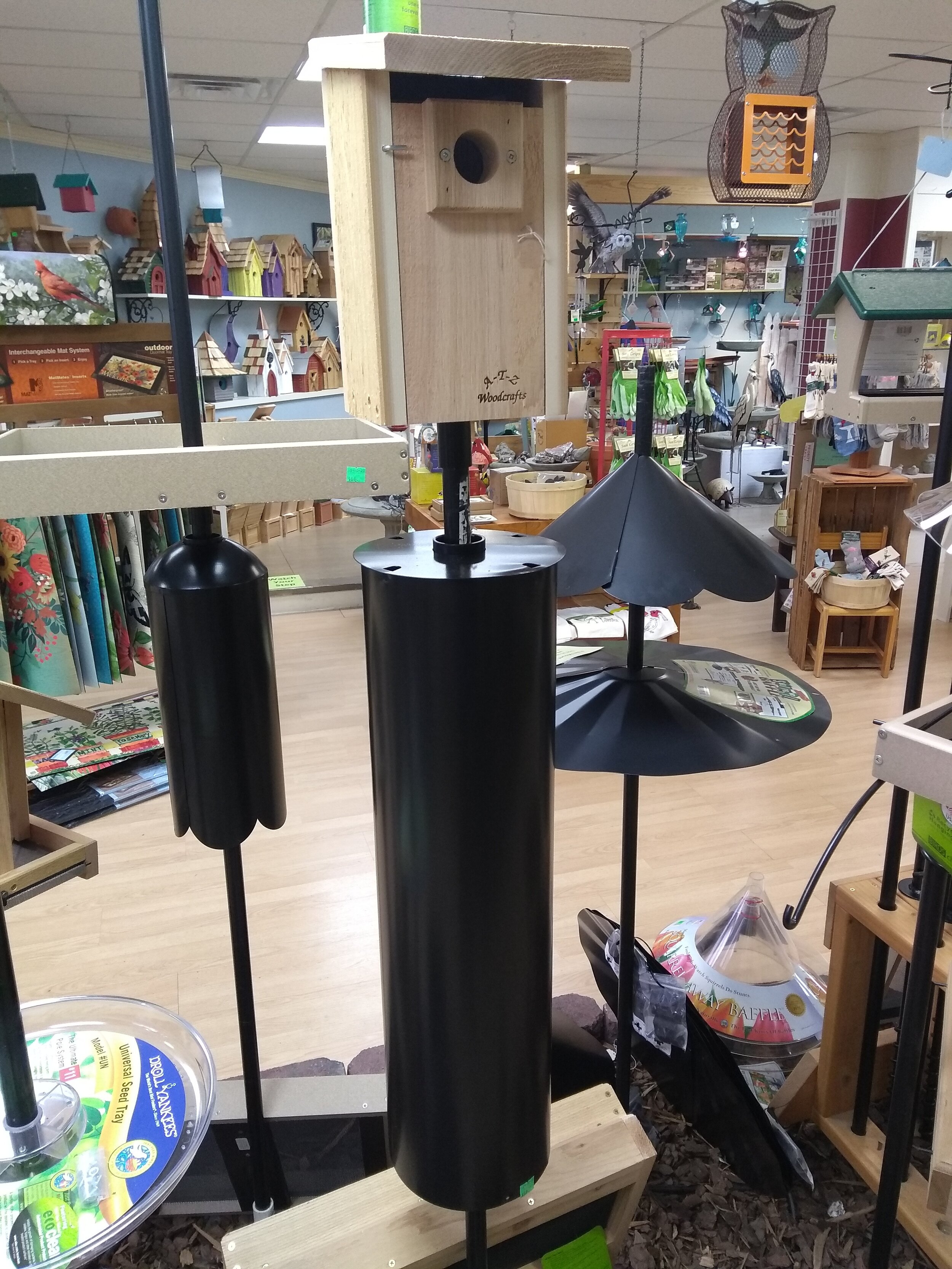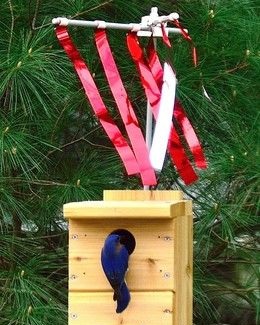Everybody would like to attract Bluebirds. The fact is it is not difficult to attract Bluebirds and the single best way to do that is with a couple of nest boxes placed in good locations as we pointed out in previous blogs. (Click here for tips on bluebird box placement.) We want to help you attract Bluebirds and enjoy the entire experience from courtship to nest building, egg laying to chick development, and finally fledging.
Besides the nest boxes planting native berry producing trees and shrubs, like Dogwood and Beautyberry, for example, having a consistent source of water, and offering an appealing food source like live mealworms are things that will help. Eastern Bluebirds feed primarily on insects and berries, so feeding them is very different than the way we feed other birds. Many of you have seen Bluebirds this winter going to suet and seed out of the shell, but this behavior usually subsides when warm weather and insect activity increases. At The Wood Thrush Shop we have a great deal of experience feeding Bluebirds and would like to pass on our tips and tricks to help you have success and enjoy the activity as much as we do. We really don’t think presenting mealworms before Bluebirds are regularly present is a good strategy. In other words just presenting mealworms randomly is not likely to attract them. All you are doing is presenting this very desirable food source to a lot of other birds.
The best time to begin offering live mealworms is when Bluebirds begin consistently checking out a nest-box. Their need for nest boxes takes precedence during the breeding season and will bring them to your yard more predictably and reliably, and potentially for several months. Feeding them then becomes a lot easier after they have found a nest-box.
Seeing Bluebirds perched on top of the box and carrying nest material is a great time to offer mealworms.
Bluebirds will often cling to the front of the box and look in when interested in a nesting sight. They will repeat this behavior to many different sites.
Once you see Bluebirds showing interest in a nest box be prepared to offer mealworms. The type of feeder to use is really not very important. My choice of feeder is a small clay dish which is placed on a large rock which is easily seen from the top of the nest-box, just a few feet away. Platform type feeders tend to work very well, too. Won’t other birds find the worms? If you follow our guidelines other birds will not be wise to the offering.
Look for an opportunity to walk out to the feeder and offer a small amount of worms, maybe a dozen. THIS IS IMPORTANT! The key is to make sure the Bluebirds are there to see you make the offering.
After placing the worms in the feeder walk away and watch. In most cases you will see immediate interest. They may fly right down to the dish and gobble them up. If their reaction is to fly away do not leave the worms there. Try again another time. If they immediately consume the worms offer another helping to reinforce the process. I repeat this little scene every time the opportunity arises over the course of the next few days or weeks. Usually 4 or 5 times is enough for the Bluebirds to catch on to what you are doing. It is VERY IMPORTANT that if during that first offering they fly away do not leave the mealworms there. The longer the worms are there the greater the likelihood that other birds, like Robins, Mockingbirds, Jays, or Starlings see them. If these birds catch on to this offering feeding the Bluebirds will then become almost impossible, not to mention possibly creating enough conflict the Bluebirds may look elsewhere to nest.
Both Mockingbirds and Robins share the same food preferences as Bluebirds and being bigger birds will vigorously defend a food source like mealworms. If you slip up and allow larger more aggressive birds to compete for the worms we suggest a reset. Stop putting out worms for a week or two and begin the process again. Better to be patient than to create an adverse situation.
So, keep the offerings minimal until the Bluebirds really catch on. Then you can increase the amounts of mealworms being offered as they raise their young. Soon they will be anticipating the offering, or even seeking you out in your yard as I’ve experienced in the past.
Offering mealworms when Bluebirds are not present is a sure way to feed a lot of other birds. Wait until you see them before offering.
If birds that you do not want are getting the mealworms suspend offering the mealworms for a few days or more and start over using the suggestions we’ve outlined.
Bluebirds may partake of other foods like dried mealworms, suet, Bluebird nuggets (a type of suet), raisins, blueberries, chopped apple and grape. Experiment and let us know your results.
Location is important. Don’t try to feed them near birdfeeders or a place that gets a lot of bird traffic. Feeding them close to their chosen nest box is easiest but do make sure you don’t let other birds in on the mealworms treat. Some birds may become territorial over the food source and create conflict at the Bluebird box.
Some people employ the method of making a sound, like whistling, while they offer the worms. Bluebirds will key in on the sound and associate that with the treat about to be given them. Its simple conditioning. I’m convinced that the Bluebirds we fed behind the store one year became familiar with the sound and sight of my truck arriving in the morning. As soon as I would get out of the truck they would be landing on nearby perches waiting for me to enter the store and bring out worms.
Remember, Bluebirds will not become dependent on the mealworms but will simply take advantage while they are offered. You can suspend feeding Bluebirds any time and not worry that they will be adversely affected.
Bluebird Feeders and Mealworms Special!
Domed feeders can be adjusted to help discourage larger birds.
Bluebird feeders can be any small dish or tray. however I would not put this many mealworms out at one time.
Barrier type feeders will limit the size of bird that can feed. These feeders may take longer to train your birds to use.



